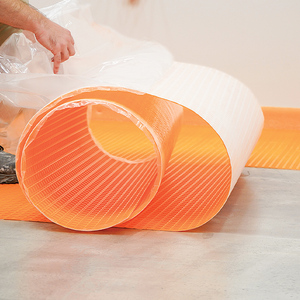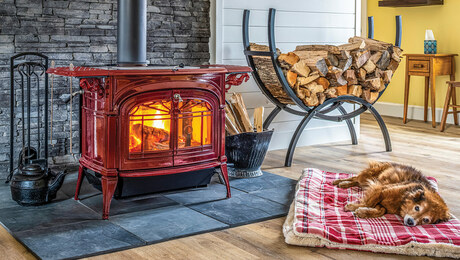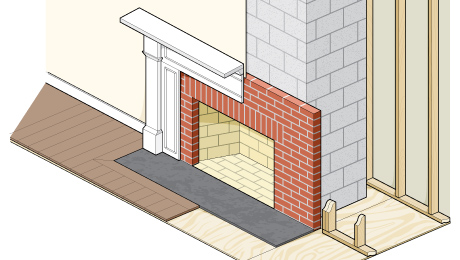Q:
My log cottage, built in 1956, has an impressive fieldstone fireplace and chimney. We have added a woodstove in the fireplace, with a stovepipe that runs up the chimney. In the past few years I have noticed with growing frequency that the stone hearth becomes dark due to dampness. The darkness disappears during dry days and reappears four to six hours after a rain storm. No water appears on the interior vertical surfaces. I’ve checked all roof flashing and cannot find any leaks.
Neil Haist, Willowdale, None
A:
Stephen Kennedy, a stonemason in Kettle, Kentucky, replies: Not having seen the chimney and fireplace in question, I can only make an educated guess as to the origin of the wetness and the ways to prevent it. But I would check all the flashing again. In uncoursed or random stonework, it is more difficult to do a proper flashing job because there are no continuous horizontal joints to tie flashing into, as there would be in a brick, block or coursed-stone chimney.
Assuming that the flashing is okay, the next most obvious trouble spot would be where stonework meets logs on the sides of the chimney. Wood and masonry join poorly in the best of circumstances. Often mortar is used to seal against wood and initially appears to join well. However, it will separate from the wood as the wood dries and contracts. Additional flashing and caulking may be required here.
The juncture of your metal stovepipe and concrete chimney cap may be a problem spot, especially if the cap is not sloped outward, and water is allowed to puddle against the stainless-steel pipe. I wouldn’t trust a mortar joint against the steel to do a proper job of sealing, as the steel will expand and contract slightly. I’d seal the stovepipe with an approved high-temp caulk.
Also, make sure that the concrete cap does slope outward slightly. A good cap also extends beyond the chimney below and acts as a roof for the masonry, shedding a high percentage of the water before it can find other openings.
Another possible source of moisture infiltration is the porosity of the masonry itself. I would go over the whole chimney, filling with mortar any gaps that were more than 1/4-in. wide and filling smaller gaps with clear silicone caulk. Then one coating of clear masonry sealer should do the rest of the job. Applying the sealer should be the last thing done, after the larger gaps are sealed.
What interests me about your question is the implication that the moisture has only recently appeared, in a 35-year-old chimney. Was something new done to it in the last few years? For example, was the roof replaced? How new is the steel chimney? An earthquake would raise hell with a fieldstone structure. Perhaps you had a small earthquake that set up some cracks. The cumulative effects of acid rain could be another culprit, slowly dissolving away lime from the mortar. If acid rain is the only problem, the openings in the masonry would be tiny, and a masonry sealer might be all you’d need.

























